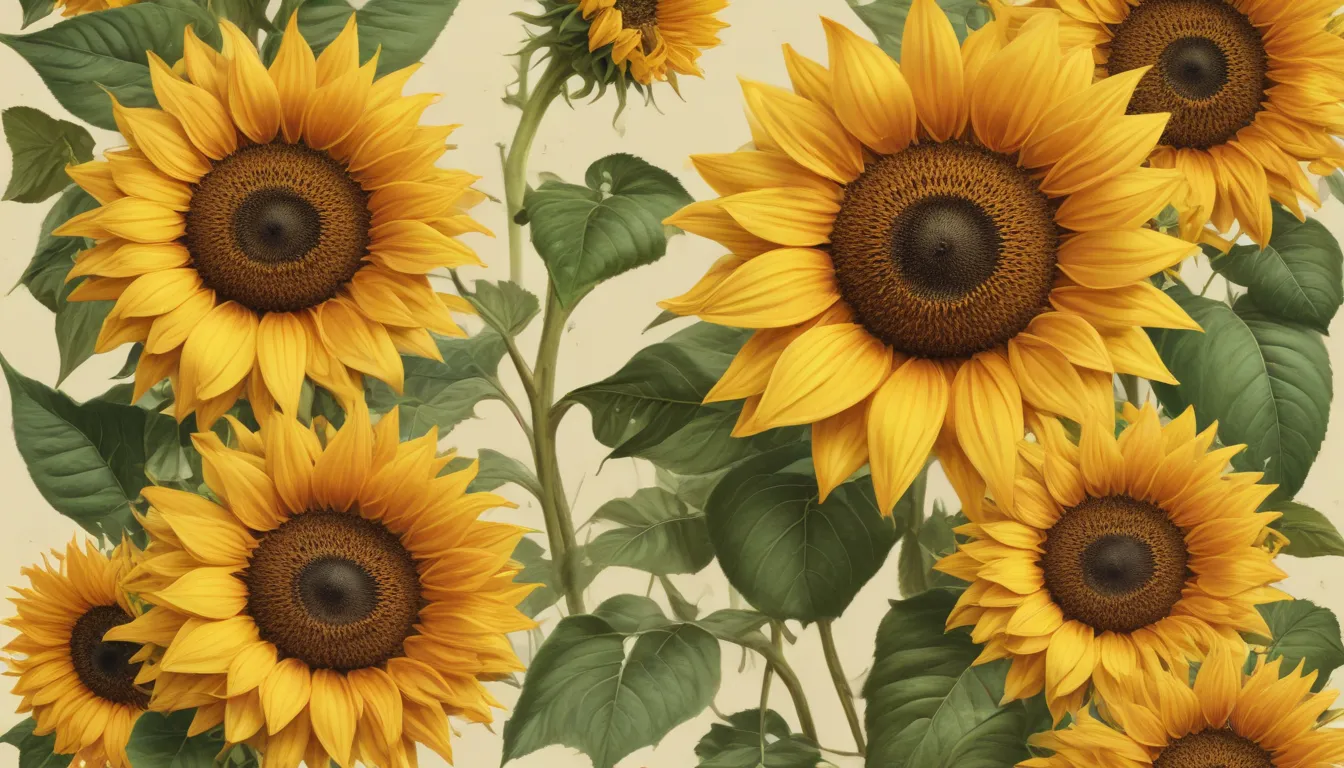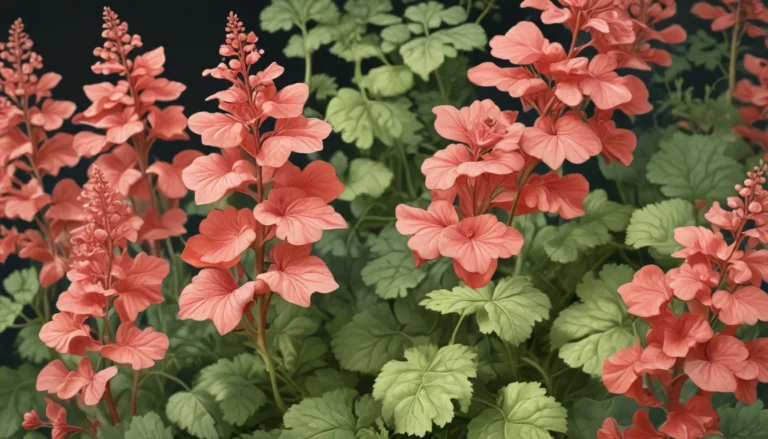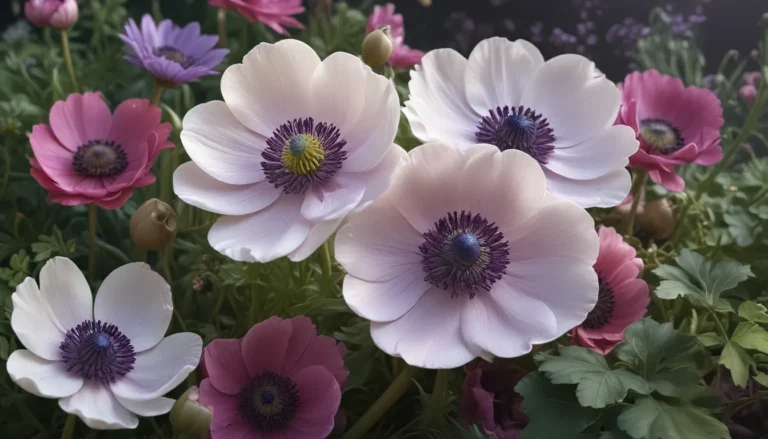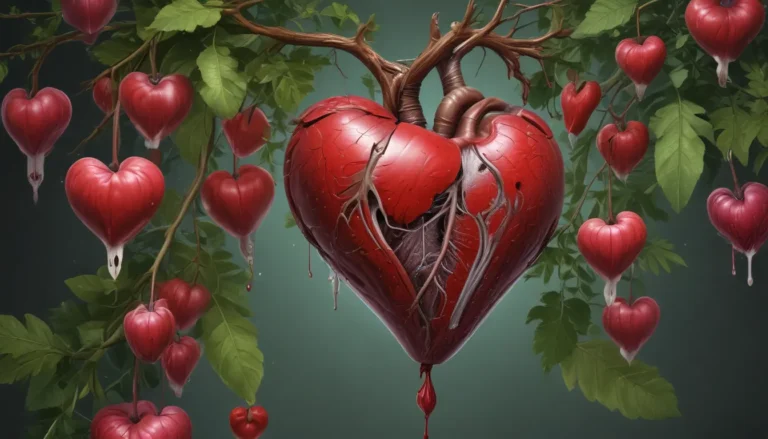The pictures we use in our articles might not show exactly what the words say. We choose these pictures to make you interested in reading more. The pictures work together with the words but don’t take their place. The words still tell you the important facts.
Are you ready to embark on a journey into the enchanting world of sunflowers? Sunflowers, scientifically known as Helianthus annuus, are more than just beautiful flowers adorning gardens and landscapes. These vibrant plants have a rich history, a multitude of interesting facts, and a symbolic significance that transcends cultures. Whether you are a seasoned sunflower enthusiast or simply curious about the wonders of nature, prepare to be captivated by the intriguing facts that we are about to unveil. So, grab your favorite cup of tea, sit back, and let's explore 19 fascinating facts about Sunflower Helianthus Annuus.
Unveiling the Complex Anatomy of Sunflowers
- Contrary to popular belief, the striking yellow "petals" of a sunflower are not individual flowers but are composed of ray flowers. In the center of the sunflower resides a cluster of tiny disc flowers, which eventually develop into the iconic seeds that we all know and love.
Uncovering the Rich History of Sunflowers
- Sunflowers trace their origins back to North America, where they were first cultivated by Native Americans over 4,500 years ago. These vibrant flowers were not only used for food and oil but also held profound cultural and spiritual significance in indigenous societies.
The Heliotropic Nature of Sunflowers
- One of the most captivating characteristics of sunflowers is their heliotropic behavior, meaning they track the movement of the sun. During the day, sunflowers follow the sun's path from east to west, ensuring they receive maximum sunlight for optimal growth.
The Towering Heights of Sunflowers
- Sunflowers are renowned for their impressive height, with the average plant reaching between 5 to 12 feet. The tallest sunflower on record soared to an astounding height of 30 feet and 1 inch, truly showcasing the remarkable stature of these plants.
The Resilience and Adaptability of Sunflowers
- Sunflowers exhibit remarkable resilience and adaptability, thriving in a wide range of climates and soil conditions. This versatility has made them one of the most cultivated crops globally, favored by farmers for their ability to flourish in diverse environments.
The Diverse Colors of Sunflowers
- While the classic yellow sunflower is the most recognizable, there are sunflower varieties available in a spectrum of colors, including red, orange, white, and even purple. This diversity adds a visually stunning dimension to sunflower fields.
The Medicinal Uses of Sunflowers
- Throughout history, sunflowers have been valued for their medicinal properties. Native Americans utilized extracts from sunflowers to treat respiratory ailments, snake bites, and infections. Additionally, sunflower oil is prized in the cosmetic industry for its hydrating qualities.
Exploring the Nutritional Power of Sunflower Seeds
- Sunflower seeds are nutritional powerhouses, packed with healthy fats, protein, fiber, vitamins, and minerals. Whether enjoyed roasted as a snack or incorporated into culinary creations, sunflower seeds offer a delicious and nutritious addition to any diet.
The Symbolic Significance of Sunflowers
- Sunflowers are synonymous with happiness, joy, and warmth, frequently evoking positive emotions in those who encounter them. These radiant flowers are commonly used in bouquets and floral arrangements to infuse spaces with cheerfulness.
The Artistic Inspiration of Sunflowers
- Renowned artists like Vincent van Gogh were captivated by the beauty of sunflowers, immortalizing them in iconic works of art. Van Gogh's series of sunflower paintings are celebrated globally for capturing the essence of these captivating flowers.
The Economic Importance of Sunflowers
- Beyond their aesthetic allure, sunflowers play a vital role in the economy due to their valuable seeds. Sunflower oil, extracted from the seeds, is widely used in cooking and serves as a base for an array of products, including cosmetics and margarine.
The Role of Sunflowers in Promoting Biodiversity
- Sunflowers attract a diverse array of pollinators, including bees, butterflies, and hummingbirds, with their bright petals and abundant nectar. By supporting pollinators, sunflowers contribute to the biodiversity of ecosystems and play a crucial role in maintaining ecological balance.
The Symbolism and Cultural Significance of Sunflowers
- Across various cultures, sunflowers are emblematic of happiness, loyalty, and longevity. They symbolize enduring bonds, personal growth, and positive aspirations, resonating deeply with individuals seeking inspiration and meaningful connections.
Harnessing the Environmental Benefits of Sunflowers
- Sunflowers possess phytoremediation capabilities, meaning they can absorb heavy metals and pollutants from the soil. As such, they are sometimes cultivated in contaminated areas as a natural method of environmental cleanup.
Embracing Sunflowers in Rituals and Traditions
- In several cultures, sunflowers have played a significant role in religious ceremonies and traditions, symbolizing abundance, fertility, and blessings. They are revered for their connection to the sun, harvest, and life-affirming energies.
Nurturing Wildlife with Sunflowers
- As sunflower plants mature and develop seeds, they serve as natural bird feeders, attracting avian species like finches, sparrows, and chickadees. These seeds provide a nutritious food source for birds, especially during colder seasons.
Sunflowers in Traditional Medicine
- Throughout history, various parts of the sunflower plant, including roots, leaves, and flowers, have been utilized in traditional medicine to address a range of ailments, from respiratory issues to malaria. Their medicinal properties have long been revered for their healing benefits.
The Agricultural Significance of Sunflowers
- Sunflowers are staple cash crops, offering a valuable source of income for farmers. The seeds are utilized in food production, birdseed formulations, and livestock feed, showcasing the diverse agricultural applications of sunflowers.
The Global Cultural Impact of Sunflowers
- From Native American folklore to ancient Greek mythology, sunflowers have pervaded diverse cultures worldwide. Their symbolic associations with fertility, good fortune, and love transcend geographical boundaries, making them universally revered.
Conclusion: Embracing the Splendor of Sunflowers
Sunflowers, with their captivating beauty and fascinating traits, stand as emblematic symbols of nature's wonders. Whether you are drawn to their heliotropic tendencies, nutritional benefits, or artistic inspirations, sunflowers offer endless avenues for exploration and appreciation. As you encounter these radiant flowers in gardens and landscapes, take a moment to reflect on the myriad of intriguing facts that make them a truly remarkable plant.
FAQs: Delving Deeper into Sunflower Insights
- Q: How tall can sunflowers grow?
-
A: Sunflowers can achieve impressive heights, with some varieties reaching up to 10-12 feet tall or even taller.
-
Q: Are all sunflowers yellow?
-
A: While yellow is the predominant color of sunflowers, there are diverse varieties that feature petals in shades of orange, red, and bi-color combinations.
-
Q: What is the significance of sunflower heliotropism?
-
A: Heliotropism enables sunflowers to track the sun's movement, ensuring maximum exposure to sunlight for optimal growth and development.
-
Q: Do sunflowers attract bees and birds?
-
A: Sunflowers are known for attracting bees, birds, and other pollinators with their vibrant colors, nectar, and pollen, playing a crucial role in supporting ecosystem biodiversity.
-
Q: Can sunflowers be utilized for oil production?
-
A: Yes, sunflowers are a valuable source of oil, with their seeds rich in oil that can be extracted for culinary purposes and various beauty products.
-
Q: Are sunflowers annual or perennial plants?
-
A: Most sunflowers are classified as annual plants, completing their life cycle within a single growing season. However, perennial varieties also exist.
-
Q: How long do sunflowers typically bloom?
-
A: Sunflowers usually bloom for a few weeks to several months, contingent on the specific variety and environmental conditions.
-
Q: Can sunflowers thrive in pots or containers?
-
A: Certain dwarf and patio sunflower varieties are suitable for container cultivation, making them ideal for small gardens or urban spaces.
-
Q: Are sunflowers drought-tolerant?
-
A: Sunflowers exhibit high drought tolerance, making them well-suited for regions with limited water availability.
-
Q: Can sunflowers prosper in diverse soil types?
- A: While sunflowers can cultivate in various soil conditions, they thrive best in well-drained, fertile soil that supports optimal growth.
Dive deeper into the enchanting world of sunflowers and broaden your botanical knowledge with our enthralling exploration of flower facts. For eco-conscious gardeners seeking sustainable practices, discover the transformative power of composting in our enlightening guide. And for health-conscious individuals intrigued by nutritional powerhouses, uncover surprising revelations about the health benefits of sunflower seeds.
Conclusion: Embracing Nature’s Marvels with Sunflowers
The allure of sunflowers extends far beyond their radiant blooms, captivating us with their historical significance, symbolic meanings, and profound impact on ecosystems. As you immerse yourself in the enchanting world of sunflowers, may you find inspiration in their resilience, beauty, and diverse contributions to our lives. So, the next time you encounter a sunflower swaying in the breeze, take a moment to appreciate the intricate tapestry of facts and wonders that make these flowers truly extraordinary.
FAQs: Delving Deeper into Sunflower Insights
If you found this exploration of sunflower facts enriching and enlightening, delve further into the realm of botanical wonders with our curated collection of plant-focused content. Our commitment to delivering accurate, engaging, and informative content ensures that each fact shared with you is a testament to our dedication to quality and authenticity. Join us on this journey of discovery and learning as we uncover the mesmerizing world of flora and fauna together.






